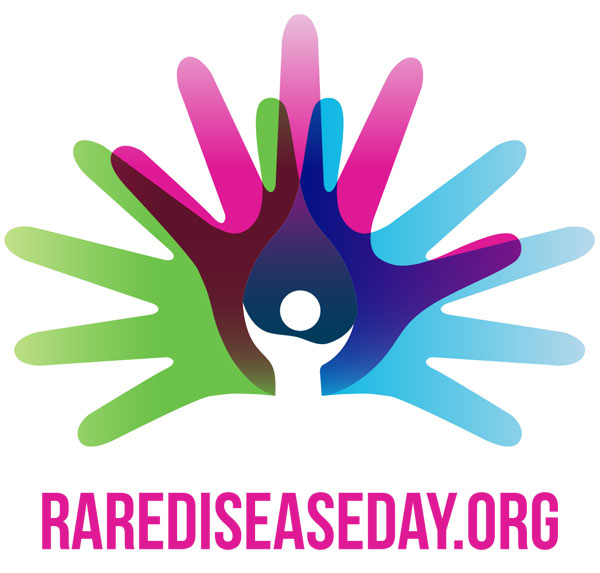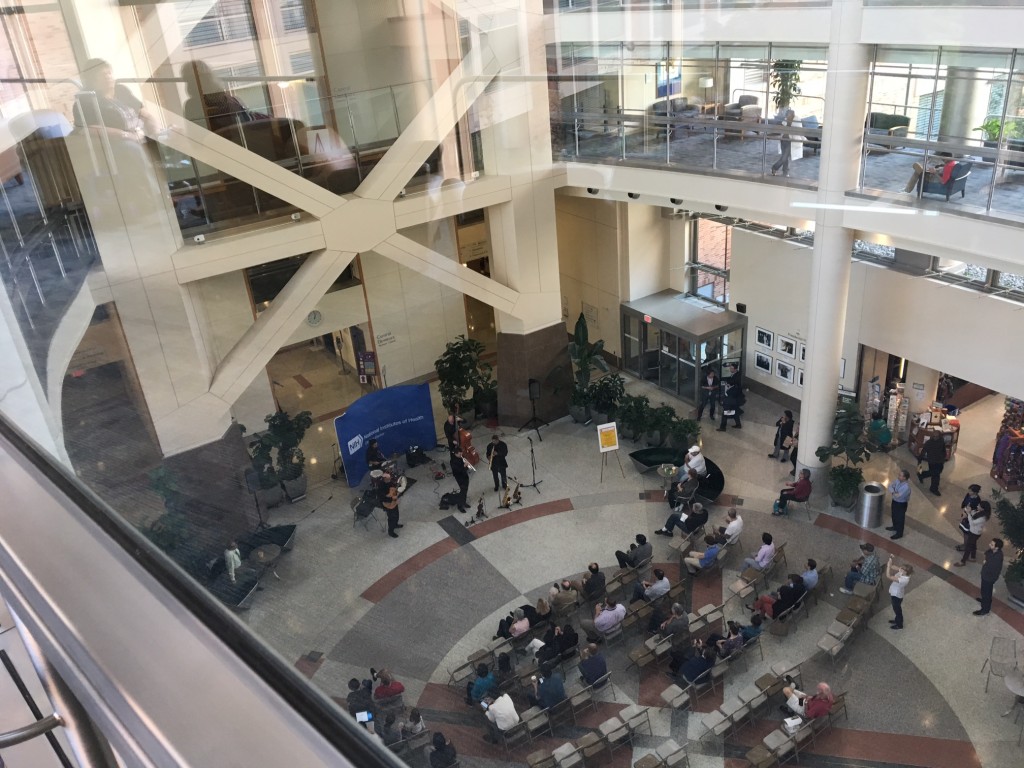
Today is Rare Disease Day, when we lift up the stories of the 300 million people who live with more than 6,000 rare conditions. This year’s theme focuses on bridging health and social care, alleviating the heavy burden on people who coordinate medical, social, and support services for themselves and their loved ones.
The National Institutes of Health runs an annual symposium to bring together researchers, advocates, and people living with rare disease. In 2015, I attended and wrote the following, which resonates with this year’s theme of making it easier for people to live, work, and play even as they seek treatment:
In the afternoon, I toured the NIH Clinical Center and the guide pointed out that researchers’ labs were built to be across from or next to patients’ rooms. I didn’t snap any pictures because it felt too intimate, but imagine neighborhoods of rooms devoted to a certain condition — all the clinicians, patients, and family members sharing a common hallway. It was beautiful, both in vision and in reality.
The one place I did take some photos was the atrium.

It soars 5 stories up, but not in the way that Michael Graves famously mocks as “a showplace to hang plaques honoring their donors.” No, not at all.
All the patient and family services are arranged in a ring on the first floor so it’s easy to get all the “business” of a visit taken care of and then sit down in an arm chair or on a couch to have coffee or lunch. The chairs and tables are sometimes moved aside so that a choir, band, or quartet can play. The music fills the space, luring patients and clinicians out of their rooms to listen, at every level of the atrium. Amazingly, it was specifically designed to become a concert hall. The acoustics are apparently very good and (I love this) patients can wheel or walk out of their rooms and remain somewhat out of sight on the upper floors if they care to, even as they have a front-row seat.
So imagine: patients, families, and researchers all together at work or at play. Drawing blood, monitoring vital signs, and listening to an aria, all at the same time, dissolving the boundaries between them.
What a beautiful vision for the future of health care — and of course we are being led to it by the alpha geeks, the zebras, the mama birds, and people practicing every-day magic.
For more, please see my other posts about rare disease.
Susannah,
Nice post, as always. Does bridging health and social care include dental care – preferably, biological dental care? Or are we once again leaving out a major determinant of health, disease, treatment, research, and prospects for recovery?
It was a pleasure and a privilege to meet you at the White House Champions of Change for Precision Medicine event in 2015. In response to my question about the importance of integrating dental and medical records for clinical care, diagnostics, Big Data and research, you noted that NIH had brought up that point at a morning planning session. I noted that I had made the same point at the NIH Precision Medicine Initiative Working Group Meeting on Patient Engagement two weeks earlier, and you said, congratulations!
Are dental records being included and analyzed in rare disease research and R&D, and are biological dentists being consulted as experts in any of these efforts?
I post this question because dental problems – from infection to inflammation, from biocompatibility and bite issues to allergic and toxic reactions – are often overlooked as an underlying cause, factor, fuel or trigger for both rare and common diseases.
As long as the medical, dental, biotech, research and regulatory system ignores this, and bifurcates the body separately from the mouth and oral cavity, which is the gateway to the airway, lungs, gut and every cell and system in the body, organs, pathways and brain, we will not make much progress, as any engineer or Big Data analyst would tell you. It is like trying to fly a plane with a series of two coordinates on the map – latitude and longitude – but lacking altitude, wind and air speed, and a log of mechanical servicing, failures, and repair.
Hi Laura! Great to “see” you again. You are the second person in recent weeks to post a comment calling for dental health to be part of the medical record. Here’s Peg’s comment on my post about a taxonomy of health data in which I asked where else do you see data related to health and wellbeing being generated, created, hoarded, or shared?
Peg’s answer:
“Complete dental history. Would include whether person schedules regular prophylactic visits, as well as a history of fillings, extractions, surgeries, periodontal disease, crowns/bridges/implants, tooth erosion, oral infections, lesions, orthodonture, endodonture, dry mouth, TMJ, and more.
I find it appalling that my dentist has my complete health history (and her hygienist always asks for updates at every visit), but none of my medical providers (including primary-care doc and surgical teams from 2 joint replacements) has ever asked a single question about my dental/oral history.”
How might we measure how widespread it is to integrate dental & medical records?
Update from Twitter, where @ManeeshJuneja shared this relevant article:
Linking medical and dental health record data: a partnership with the Rochester Epidemiology Project
From the abstract: “The purpose of this project was to expand the Rochester Epidemiology Project (REP) medical records linkage infrastructure to include data from oral healthcare providers. The goal of this linkage is to facilitate research studies examining the role of oral health in overall health and quality of life.”
It’s open access so we can all read and learn from it. Thanks, Maneesh!